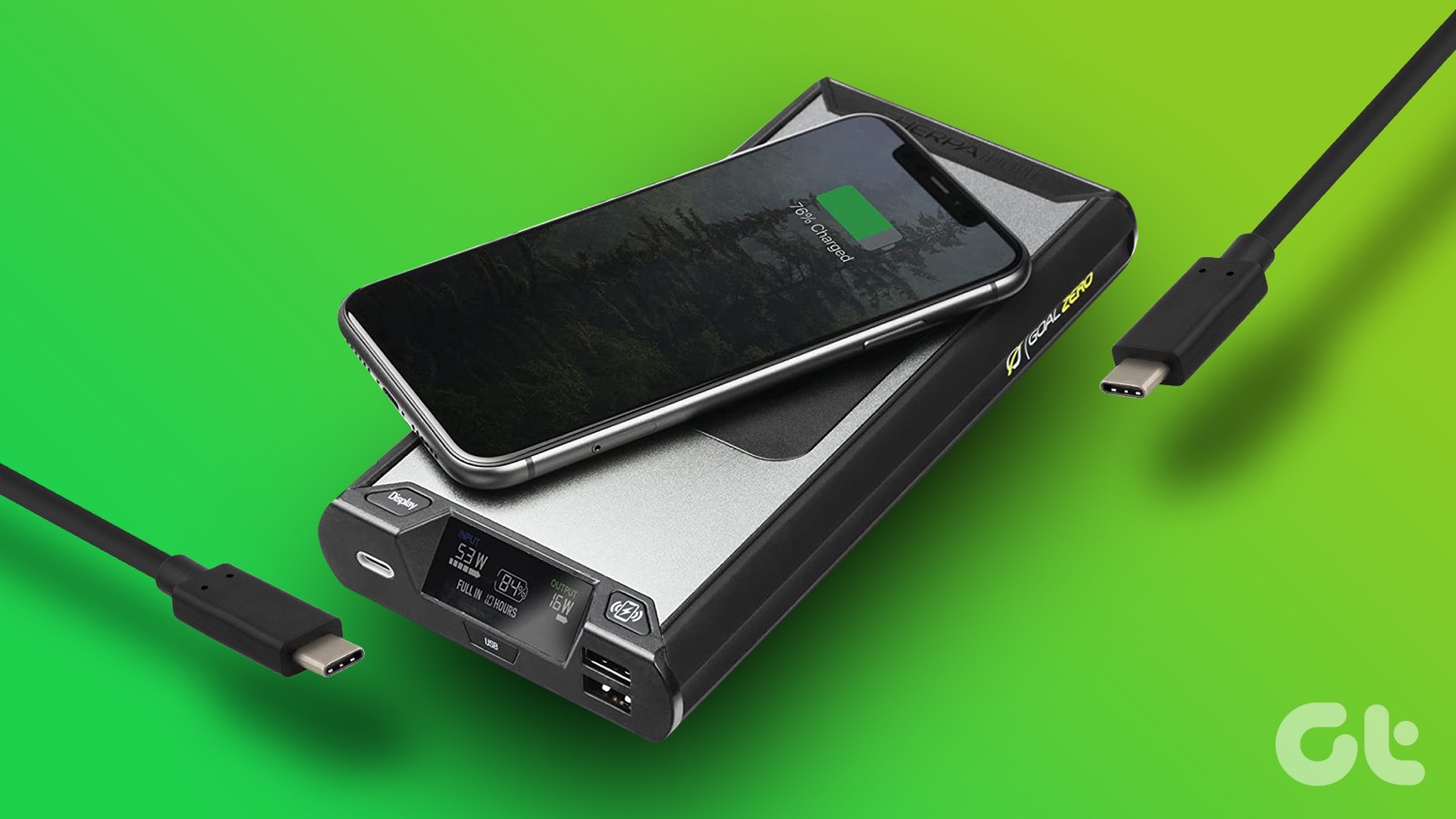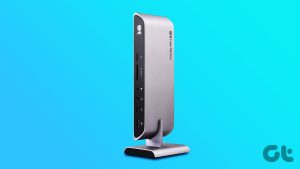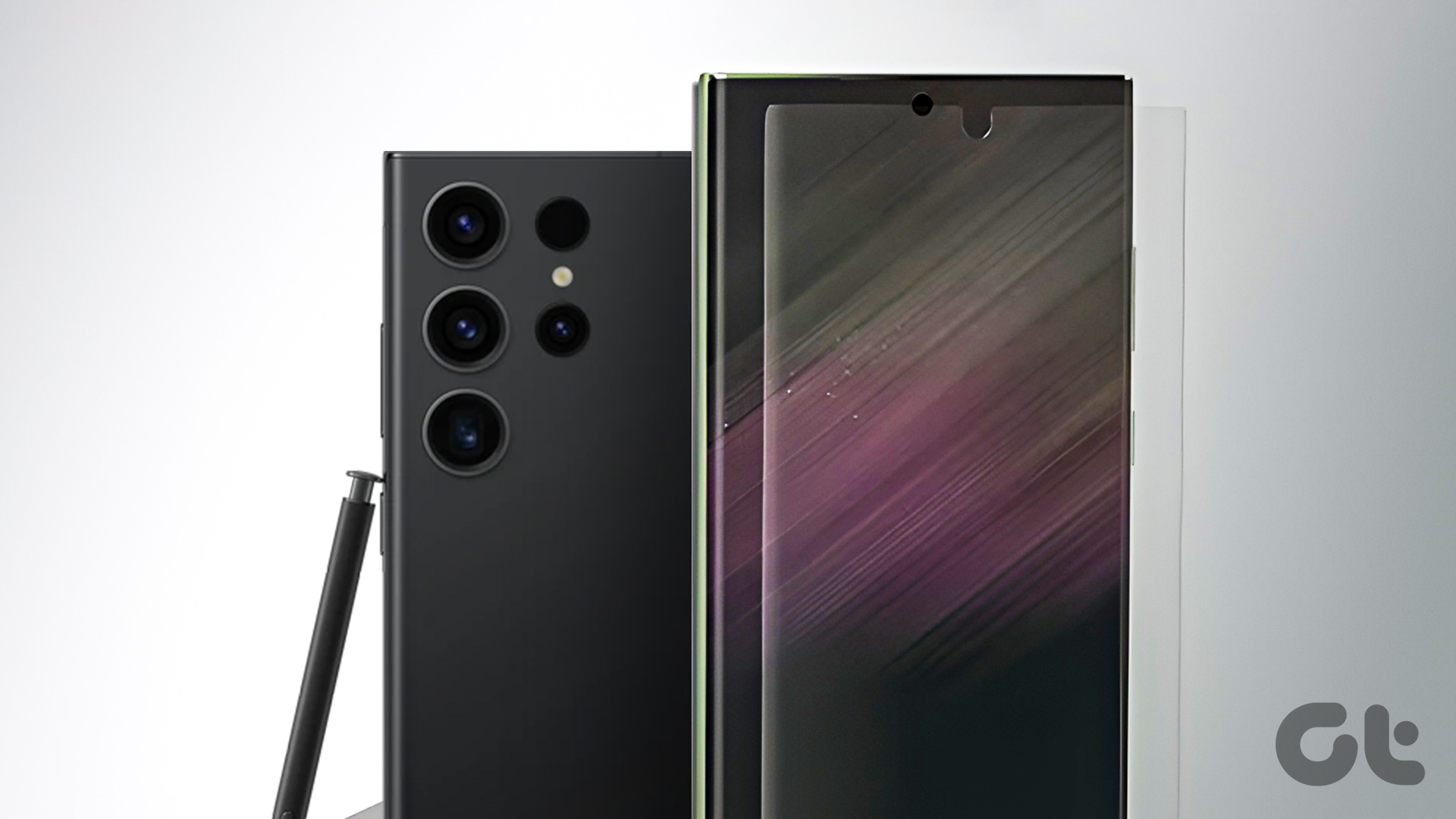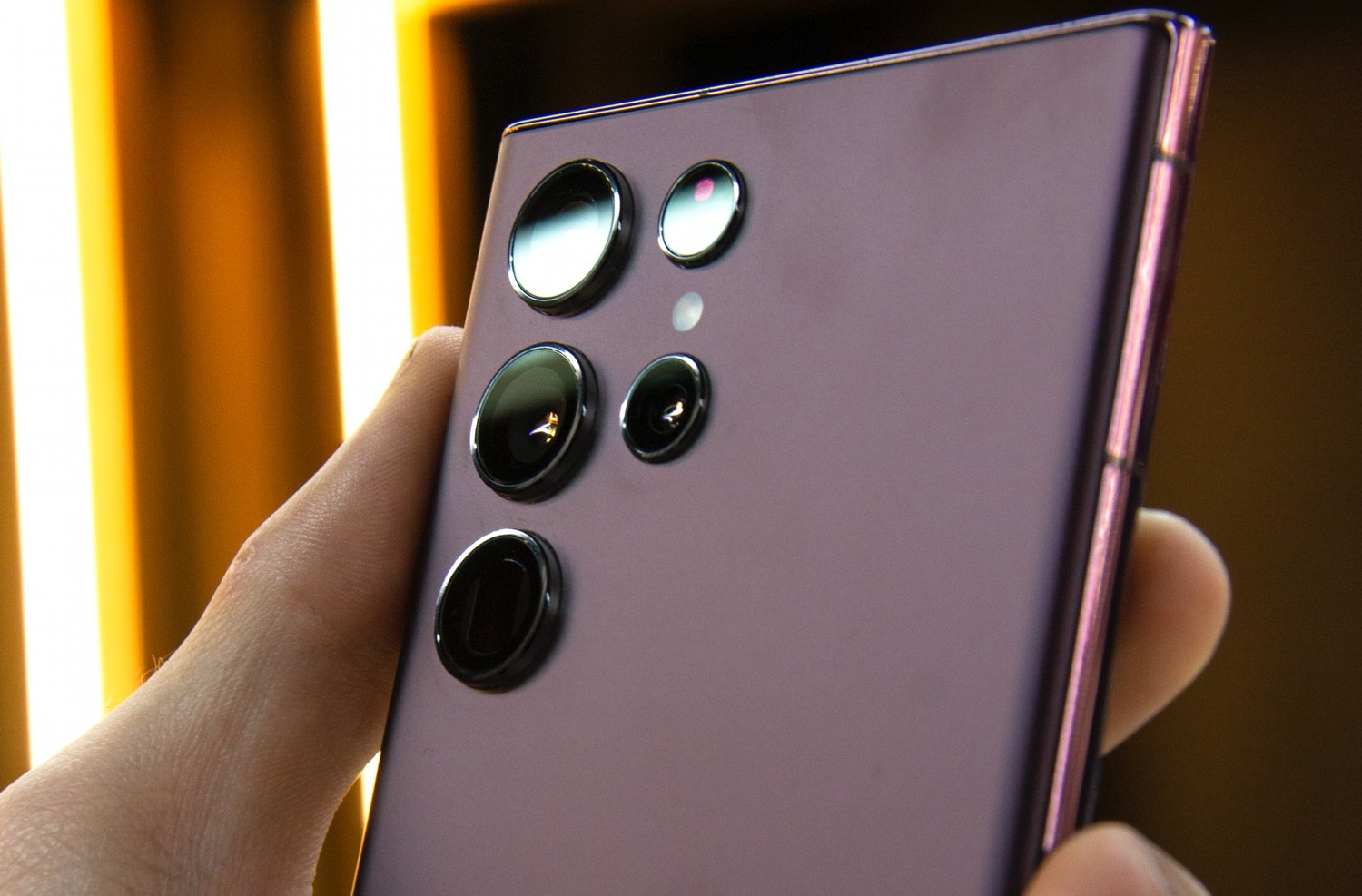It’s 2020 and power banks are catching up with the game of fast charging tech. With USB-C becoming a ubiquitous choice for charging standard for both smartphones and compact laptops, power banks with USB-C Power Delivery are now more important than ever, especially if you travel a lot. These portable devices not only fast charges the connected devices but are also capable of recharging itself at a fast pace. And with the time saved, you can utilize the saved time to top up the battery of your other devices such as wireless earphones and fitness trackers.

One of the primary advantages of having a power bank with USB-C PD outputs is connecting compatible laptops and smartphones to the port. The connected device will pull the power based on its needs. And thanks to variable voltages, the charging time is significantly fast and quick (read more about USB Power Delivery).
And in most cases, since the output port acts as the input port, you can do away with the hassle of carrying additional power cables. The one used for charging your smartphone will work.
Now, all you need to do is add a sizeable battery to the mix, and you’ll have the perfect recipe in your hands.
This post has assembled a small list of the best power banks with USB-C Power Delivery that you can buy.
So, without further ado, let’s get started. But before that,
- Intrigued by GaN chargers? Here’s a list of the best ones out there
- Why limit yourself to just power banks. Take a look at these power strips With USB‑C PD
1. RAVPower PD Pioneer
- Capacity: 20000mAh
- Total Watt: 60W
- Number of Outputs: 1 x USB-C, 1 x USB-A

The RAVPower PD Pioneer is ideal for juicing up laptops and smartphones, thanks to its significant power output. The USB-C port has a maximum power output of 60W, making it suitable for charging compact USB-C laptops like the Macbook Air, Chromebooks, and even the MacBook Pro. And it doesn’t end there. The USB-A port supports Qualcomm Quick Charge and can top up compatible smartphones fast and quick.
RAVPower PD Pioneer segregates power delivery quite cleverly. When both the ports are used, the USB-C port delivers an output of 45W while the USB-A port gets the remaining 18W. The good thing about the PD Pioneer is that it uses the USB-C PD port (30W) for topping up the power bank, which gets wrapped up in around 3 hours. Impressive right?
The only thing you need to keep in mind is to use a Power Delivery compatible cable and a wall adapter. The 20000mAh power capacity will provide you at least three charges for your phone before you call it day. RAVPower claims that it can charge the Samsung Galaxy S10 and the iPhone 11 more than three times.
The PD Pioneer uses an LG-made battery on the inside. We can safely assume that there are safety checks in place to prevent overheating and voltage surge issues. It weighs around 13.2oz (~374.2gm). Its slim profile makes it convenient to carry it in your pocket or bag.
2. Anker PowerCore+
- Capacity: 26800mAh
- Total Watt: 45W
- Number of Outputs: 1 x USB-C, 2 x USB-A

The Anker PowerCore+ can charge just about any device you connect to it, be it a smartphone, a tablet, or a humble smartphone. This slim power bank comes with a capacity of 26800mAh and has three outputs, which includes two USB-A ports. The USB-C Power Delivery port provides power at 45W, which is enough to charge laptops, tablets, and compatible smartphones. The USB-A ports delivers about 15W of power through the output of 5V/2.4A.
Though it costs a lot more than the RAVPower power bank, let me tell you that it also bundles a PowerPort Atom III wall adapter (60W) and a charging cable with the case. The main advantage of this kit is that you can use the wall adapter and the charger to charge laptops like the MacBook Pro directly.
The capacity of 26800mAh ensures that you do not have to worry about the charge running out before your phone gets fueled. As per the folks at the PC Mag, this power bank kept a MacBook running for more than 8 hours. Now, that’s something.
The USB-A ports are optimized to charge low-power devices as well. So yeah, you can rest assured even when you hook your earphones into the 15W port.
The Anker PowerCore+ has been received well by its user base primarily because of its high capacity and fast charging ability. And as per Fakespot’s estimates, around 69.7% of the reviews are reliable.
The larger capacity makes the power bank heavy. The 1.6-pound weight might prove it difficult to carry in your pockets or hands.
3. Choetech Portable Charger USB-C Power Bank
- Capacity: 26800mAh
- Total Watt: 118W
- Number of Outputs: 2 x USB-A. 1 x USB-C

If you want your power bank to be future proof, you can’t go wrong with the Choetech Portable Charger USB-C Power Bank. This one has a massive power output of 100W and can charge laptops and smartphones at full speed. It is an ideal power bank if you are apprehensive about using public USB ports while traveling. The makers claim that it can charge the 16-inch MacBook Pro to 60% in just about an hour.
As mentioned above, it has three output ports. While the USB-C PD port has a maximum output of 100W, the USB-A ports support Quick Charge 3.0 and can charge compatible Android phones in no time. The good thing about Power Delivery ports is that they charge connected devices as per their rating.
Even if you connect an iPhone X rated at 18W to the USB-C port, it’ll only draw the required output. So yeah, you can rest aside worries of overcharging and overheating.
Simultaneously, the massive 26800mAh battery can provide several full charges to devices when connected individually. For example, a fully charged power bank can provide 1.8 charge cycles to the iPad Pro and around four complete cycles to the Samsung Galaxy S20.
Naturally, the Choetech power bank’s rich feature set means you will have to shell out a significant sum of money. For now, this portable power bank costs around $80.
4. RAVPower Xtreme
- Capacity: 26800mAh
- Total Watt: 30W
- Number of Outputs: 1 x USB-C, 2 x USB-A, 1 x micro USB (input)

Another RAVPower power bank is the RAVPower Xtreme. This one has almost the same capacity as the one above with a USB-C PD port and two USB-A port. The combination of higher wattage and ample outputs ensures that you will be able to charge all your devices effortlessly. In addition to the USB-C port, the USB-A ports provide an output of 12W. While it may not be enough, it’s safe to say that it gets the party started.
Charging via the Xtreme power bank is fast and quick. As per the folks at Mac World, this USB-C power bank took approximately 2.5 hours to charge an older 12-inch MacBook model (2015).
Apart from the USB-A and USB-C ports, this one also bundles a Micro USB port, which can also be used to top up the power bank in question. Naturally, it will take a significantly longer time. Thankfully, the USB-C ports is usable to charge the device, and it gets wrapped up in around five hours.
5. ROMOSS SW30PS+Power Bank
- Capacity: 30000mAh
- Total Watt: 18W PD
- Number of Outputs: 1 x USB-C, 2 x USB-A

The ROMOSS SW30PS+Power Bank proves to be a great buy if you are looking to buy a power bank primarily to charge your smartphone and tablet. This one has a standard power output of 18W and does its duty to top up phones quickly. Interestingly, this power bank has a total of six input & output ports. It’s one of the few power banks out there with three inputs – Micro USB, Lightning, and Type-C. Naturally, you can take your pick, and depending on your choice, the recharging time will vary. If you choose to go via the slowest route, it will take around 21 hours for a full recharge.
Now, coming to the most important feature – Charging speed. It has a standard 18W Type C output port followed by a USB-A port and a micro-USB port. The latter comes to the picture when you have to charge legacy devices.
As you may already know, you can hook your laptop to the 18W port in case of an emergency. The only thing is that it will charge at a much slower speed.
The massive 30000mAh capacity means you do not have to worry about charging it for a long time. And the story doesn’t end there. This USB-C PD power bank is also compatible with Android phones supporting Qualcomm Quick Charge.
Interestingly, this 18W power bank is quite popular on Amazon and has more than a thousand user reviews. However, it’s not without its share of flaws.
For one, it doesn’t ship with a power cable, and this can prove to be a huge limitation, especially when it comes to recharging it. Secondly, the sheer number of one-way ports can be confusing for many users.
6. Anker PowerCore Slim
- Capacity: 10000mAh
- Total Watt: 18W
- Number of Outputs:
Compared to the ones above, the capacity is fairly less, and the odds are that you will lose charge on it quickly. If we calculate the capacity at 3.7 volts, it’s around 7,400mAh.
If you take the case of the Samsung Galaxy S20 Ultra, which has a 5,000mAh battery, this power bank will just be able to provide a little over a single cycle. Whereas in the case of the 3969mAh battery of the iPhone 11 Pro Max, this power bank will deliver just around 2 cycles of full charges.
Other than that, at 18W, you can expect the charging time to get over soon. Here, the USB-C PD port acts as the input, and it takes around 3 hours for it to charge completely when hooked to a compatible USB-C PD wall adapter.
Alternatively, you can check out the AUKEY 10000mAh Portable Charger. This one also supports 18W fast charging over USB-C PD.
As Swift as a Bird
These days, phone batteries die out sooner than anticipated, thanks to resource-heavy apps and content Thankfully, these power banks will be able to save your day should you find yourself with a dying battery (and no power outlet in sight).
So, which one of these will you pick?
Last updated on 02 February, 2022
The above article may contain affiliate links which help support Guiding Tech. However, it does not affect our editorial integrity. The content remains unbiased and authentic.












